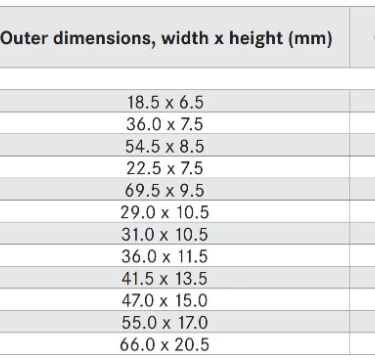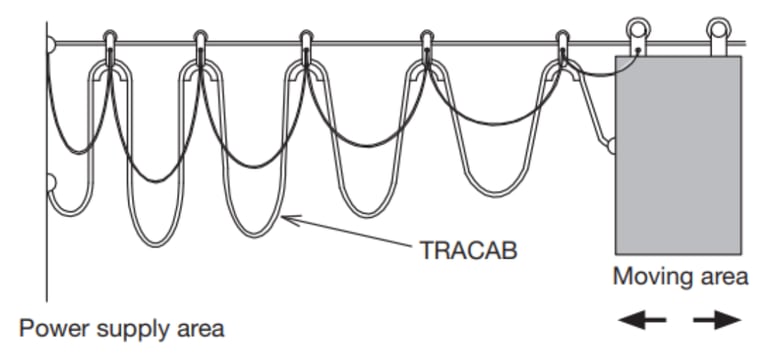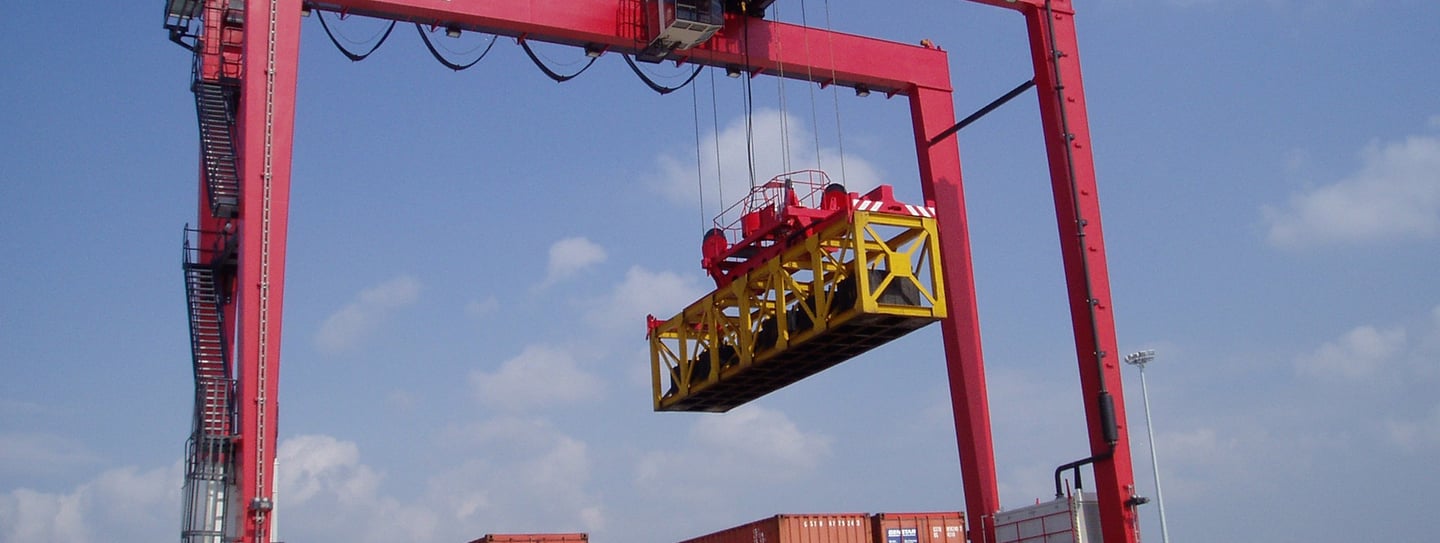📞+86 153 7530 2641 📧 hongjing.Wang@feichuncables.com

NGFLGÖU Crane Flat Cables – Are Weather-Resistant Screened Rubber Control Cables the Best Choice for Harsh Industrial Environments?
Discover NGFLGÖU crane flat cables: weather-resistant, copper-screened rubber control cables for cranes, trolleys, elevators, and harsh environments. Learn about EMI shielding, flame-retardant properties, and space-saving flat cable design for industrial applications.
hongjing.Wang@Feichun
8/13/202513 min read


1. Introduction to NGFLGÖU Crane Flat Cables
In today's demanding industrial landscape, the reliability of electrical infrastructure can make or break operational efficiency. NGFLGÖU crane flat cables represent a specialized category of weather-resistant screened rubber control cables designed specifically for harsh outdoor environments and mobile industrial applications. These cables combine advanced materials science with practical engineering solutions to address the unique challenges faced by crane operators, material handling systems, and heavy industrial equipment.
NGFLGÖU crane flat cables are distinguished by their flat profile construction, which fundamentally differs from traditional round cable designs. While round cables maintain a circular cross-section, flat cables feature a compressed, ribbon-like profile that offers distinct advantages in space-constrained installations. This design philosophy emerged from the need to optimize cable management in mobile applications where every millimeter of space matters, particularly in crane trolley systems, cable carriers, and confined industrial environments.
Weather resistance stands as a critical requirement in industrial environments where cables face constant exposure to moisture, temperature extremes, UV radiation, and mechanical stress. Traditional cables often fail prematurely when subjected to these harsh conditions, leading to costly downtime, safety hazards, and maintenance expenses. NGFLGÖU crane flat cables address these challenges through specialized rubber compounds and construction techniques that maintain performance integrity across a wide range of environmental conditions.
The importance of reliable cable performance in industrial settings cannot be overstated. When a crane cable fails on a construction site or in a steel mill, the consequences extend far beyond simple equipment downtime. Production schedules are disrupted, safety protocols may be compromised, and the costs associated with emergency repairs and lost productivity can quickly escalate into significant financial losses. This reality has driven the development of increasingly sophisticated cable technologies that prioritize durability, reliability, and long-term performance.
2. Key Features of Weather-Resistant Screened Rubber Control Cables
NGFLGÖU crane flat cables incorporate several critical features that distinguish them from conventional industrial cables. The flame-retardant properties, certified according to IEC 60332-1-2 standards, ensure that these cables meet stringent fire safety requirements essential in industrial environments. This certification indicates that the cable will not propagate flames when subjected to standardized fire tests, providing crucial safety margins in applications where fire hazards may be present.
EMC (Electromagnetic Compatibility) compliance represents another cornerstone feature of these cables. The copper braiding system provides comprehensive electromagnetic interference (EMI) shielding, protecting sensitive control signals from external electromagnetic disturbances. This shielding consists of tin-plated copper braiding that forms a Faraday cage around the cable cores, effectively blocking electromagnetic radiation that could otherwise interfere with control systems and communication protocols.
The individual core screening architecture enhances this protection through a multi-layer approach. Each core receives individual screening consisting of plastic foil wrapping combined with tin-plated copper braiding, followed by additional plastic foil wrapping. This comprehensive screening system ensures signal integrity even in environments with high levels of electromagnetic interference, such as those found near welding equipment, large motors, or radio frequency transmissions.
Temperature flexibility represents a crucial performance parameter for outdoor industrial applications. NGFLGÖU crane flat cables maintain their flexibility and mechanical properties at temperatures as low as -25°C for flexible use applications, extending to -40°C for fixed installation applications. This temperature range encompasses the vast majority of industrial operating conditions, ensuring reliable performance across diverse geographical locations and seasonal variations.
The special rubber compound used in both core insulation and outer sheath construction provides the foundation for the cable's weather resistance. This compound resists degradation from UV exposure, ozone, moisture, and temperature cycling, maintaining its electrical and mechanical properties throughout extended service life. The formulation balances flexibility with durability, ensuring that the cable can withstand repeated flexing while maintaining its protective characteristics.


3. Advantages of Flat Cable Design in Industrial Applications
The flat cable design philosophy offers significant practical advantages in industrial applications, particularly where space optimization and installation efficiency are paramount concerns. The compressed profile of flat cables typically requires 30-40% less vertical space compared to equivalent round cables, making them ideal for applications with height restrictions or where multiple cables must be routed through confined spaces.
Space-saving benefits extend beyond simple dimensional advantages. In cable management systems, flat cables can be stacked more efficiently, reducing the overall size requirements for cable trays, conduits, and support structures. This efficiency translates directly into cost savings during initial installation and provides greater flexibility for future system modifications or expansions.
Smaller bending radii represent another significant advantage of flat cable construction. While round cables typically require bending radii of 10-15 times their diameter, flat cables can achieve much tighter bends due to their geometry and construction. For NGFLGÖU crane flat cables, the minimum bending radius for flexible applications is 10 times the cable thickness, while fixed installations can accommodate radii as small as 4 times the thickness. This flexibility proves invaluable in applications such as crane trolley systems, where cables must navigate tight turns and complex routing paths.
Installation efficiency improves dramatically with flat cable designs. The reduced profile and improved bend radius allow installers to route cables through smaller openings and navigate complex paths that would be impossible with round cables. Additionally, the flat profile provides better contact with support surfaces, reducing the likelihood of cable movement or vibration-induced wear during operation.
The mechanical advantages of flat construction extend to dynamic applications where cables experience repeated flexing. The distributed stress pattern across the flat profile reduces localized stress concentrations that often lead to premature failure in round cables. This characteristic proves particularly valuable in crane applications where cables may experience millions of flex cycles throughout their service life.


4. Copper Screening and Its Benefits in Harsh Environments
The copper screening system employed in NGFLGÖU crane flat cables serves multiple critical functions in harsh industrial environments. The tin-plated copper braiding provides exceptional electromagnetic interference (EMI) shielding effectiveness, typically achieving shielding effectiveness values exceeding 40 dB across a wide frequency range. This level of protection ensures that sensitive control signals remain uncorrupted even in environments with significant electromagnetic disturbances.
Tin plating on the copper braiding serves several important purposes beyond basic conductivity. The tin coating prevents oxidation of the underlying copper, maintaining consistent electrical contact and shielding effectiveness throughout the cable's service life. In harsh environments where moisture and corrosive elements are present, this protection becomes essential for long-term reliability. The tin plating also facilitates easier termination and connection procedures, as the surface remains solderable and provides reliable electrical contact.
Applications requiring EMC compliance are increasingly common in modern industrial environments. Crane systems operating near high-power equipment such as arc furnaces, induction heaters, or large motor drives must maintain signal integrity despite intense electromagnetic fields. Similarly, automated material handling systems in manufacturing facilities require reliable communication between control systems and mobile equipment, where electromagnetic interference could disrupt operations or compromise safety systems.
The multi-layer screening approach employed in these cables provides comprehensive protection against various types of electromagnetic interference. Low-frequency magnetic fields, which can penetrate many shielding materials, are effectively attenuated by the copper braiding. High-frequency electromagnetic radiation, commonly generated by switching power supplies and digital control systems, is blocked by the combination of plastic foil and copper braiding layers.
Ground loop elimination represents another benefit of proper cable screening. The continuous copper braid provides a low-impedance path for return currents, reducing the likelihood of ground loops that can cause signal distortion or equipment malfunction. This characteristic proves particularly valuable in large industrial installations where extensive grounding systems and multiple equipment connections create potential ground loop scenarios.


5. Application Range of NGFLGÖU Crane Flat Cables
NGFLGÖU crane flat cables find extensive application across diverse industrial sectors where reliability and durability are paramount. Construction sites represent a primary application area, where tower cranes, mobile cranes, and other lifting equipment operate in challenging outdoor conditions. These environments subject cables to temperature extremes, moisture, dust, and mechanical stress while demanding consistent performance for safety-critical operations.
Shipyards present particularly demanding conditions for crane cables, combining marine environments with heavy industrial operations. The salt air, moisture, and corrosive atmosphere in shipbuilding facilities would quickly degrade conventional cables, while the flat cable design allows for efficient routing through the complex structures of ships under construction. Gantry cranes and shipyard cranes utilizing these cables maintain reliable operation despite constant exposure to marine conditions.
Cable trolley systems in steelworks represent another critical application where NGFLGÖU crane flat cables excel. The extreme temperatures, electromagnetic interference from arc furnaces, and continuous duty cycles in steel production facilities demand cables with exceptional durability and EMI resistance. The flat profile allows for efficient installation in the constrained spaces typical of steel mill infrastructure while the copper screening ensures reliable signal transmission despite the harsh electromagnetic environment.
Sewage treatment plants utilize these cables in applications where moisture, corrosive gases, and outdoor exposure create challenging operating conditions. Lifting equipment, conveyor systems, and automated handling equipment in these facilities require cables that can maintain performance despite continuous exposure to humid, corrosive atmospheres. The weather-resistant rubber compounds and comprehensive screening provide reliable service in these demanding applications.
High rack storage facilities increasingly rely on automated material handling systems that demand reliable control cables. The flat cable design proves advantageous in these applications, allowing for efficient routing through the complex framework of automated storage and retrieval systems. The reduced bending radius requirements enable navigation through tight spaces while maintaining signal integrity for precise positioning control.
Elevators and lifting equipment operating in outdoor conditions benefit significantly from the weather resistance and durability of these cables. Unlike indoor elevator installations, outdoor lifts face constant exposure to weather elements while maintaining safety-critical performance requirements. The flat cable design allows for efficient installation in the confined spaces of elevator shafts while providing the reliability essential for passenger safety systems.


6. Technical Specifications Overview
The technical specifications of NGFLGÖU crane flat cables reflect their specialized design for demanding industrial applications. The voltage rating of 300/500 V makes these cables suitable for low-voltage control and power distribution applications commonly found in industrial automation systems. This voltage rating, combined with a test voltage of 2000V, provides substantial safety margins for normal operating conditions while ensuring reliable insulation performance.
Conductor construction utilizes strands of bare or tinned copper wires conforming to extra-fine and fine wire classifications according to VDE 0295/IEC 60228 standards. This construction provides excellent flexibility while maintaining low electrical resistance and reliable current-carrying capacity. The choice between bare and tinned copper depends on specific application requirements, with tinned copper providing enhanced corrosion resistance in harsh environments.
The minimum bending radius specifications demonstrate the mechanical advantages of flat cable construction. For flexible applications involving repeated movement, the minimum radius of 10 times the cable thickness allows for compact installation while preventing stress-related failures. Fixed installation applications can utilize even smaller radii of 4 times the thickness, enabling routing through very confined spaces.
Cable dimensions vary according to core count and cross-sectional area requirements. Available configurations range from 4-core designs for basic control applications to 12-core versions for complex multi-signal systems. Cross-sectional areas span from 1.5 mm² for signal applications to 50 mm² for higher current requirements, providing flexibility to match specific application needs.
The outer dimensions reflect the space-saving advantages of flat construction. A 4-core 1.5 mm² cable measures only 18.5 x 6.5 mm, while maintaining all the protective features and performance characteristics required for harsh environment applications. Even larger configurations such as the 4-core 50 mm² version maintain a relatively compact 66.0 x 20.5 mm profile compared to equivalent round cables.
Weight considerations become important for mobile applications such as crane trolley systems. The cables achieve competitive weight-to-performance ratios, with the 4-core 1.5 mm² version weighing 220 kg/km including the copper screening and weather-resistant sheath materials. This weight efficiency proves valuable in applications where cable weight affects system dynamics or structural loading.


7. Industry Standards and Compliance
NGFLGÖU crane flat cables are manufactured to meet rigorous industry standards that ensure consistent quality, safety, and performance. The foundation standard VDE 0250 (NGFLGÖU) provides the basic construction and performance requirements for these specialized cables. This German standard, recognized internationally, establishes criteria for materials, construction methods, testing procedures, and performance characteristics specific to mobile and outdoor industrial applications.
VDE 0293-308 color coding compliance ensures that cable cores can be easily identified during installation and maintenance procedures. Standardized color coding reduces installation errors, simplifies troubleshooting, and enhances overall system safety. The consistent application of these color codes across different cable sizes and configurations provides reliability for technicians working with these systems.
Flame-retardant certification according to IEC 60332-1-2 demonstrates compliance with international fire safety standards. This certification requires that cable samples pass standardized flame propagation tests, ensuring that the cables will not contribute to fire spread in the event of an incident. The certification process involves rigorous testing under controlled conditions to verify that the cable materials meet specific flame-retardant criteria.
Quality management systems ensure consistent manufacturing processes and final product characteristics. The cables undergo comprehensive testing during production to verify electrical properties, mechanical characteristics, and environmental resistance. These quality control measures provide confidence that each cable will perform according to specifications throughout its intended service life.
Packaging and supply options accommodate diverse project requirements and logistics considerations. Standard lengths are available for common applications, while custom lengths can be manufactured for specific installations. Coil packaging suits smaller quantities and shorter lengths, typically up to 30 kg or 250 meters. Drum packaging provides efficient handling for longer lengths and larger quantities, with multiple drums available for very large projects.
The availability of technical documentation, including detailed specifications, installation guidelines, and application notes, supports proper cable selection and installation. This documentation ensures that end users can make informed decisions about cable selection and implement proper installation practices to maximize performance and service life.
8. Choosing the Right NGFLGÖU Crane Flat Cable for Your Application
Selecting the appropriate NGFLGÖU crane flat cable requires careful consideration of multiple factors that influence both immediate performance and long-term reliability. The core count determination depends on the number of individual circuits required for the application, including power conductors, control signals, and communication lines. Applications requiring only basic motor control may need only 4 cores, while complex automated systems might require 12 or more cores for comprehensive control and feedback signals.
Cross-sectional area selection depends on current-carrying requirements, voltage drop considerations, and mechanical strength needs. Power circuits typically require larger cross-sections to handle motor currents safely, while control and signal circuits can utilize smaller conductors. The relationship between conductor size and current capacity must account for ambient temperature conditions, installation methods, and grouping factors that affect heat dissipation.
Environmental considerations play a crucial role in cable selection and expected service life. Applications involving extreme temperature variations, chemical exposure, or intensive UV radiation may benefit from specific rubber compound formulations or additional protective measures. The standard weather-resistant formulation handles most outdoor industrial environments effectively, but specialized applications may require consultation with cable manufacturers for optimized solutions.
Mechanical stress evaluation helps determine the appropriate cable construction and installation methods for each application. High-flex applications such as crane trolley systems subject cables to millions of flex cycles and require careful attention to bend radius limitations and installation practices. Static installations may tolerate smaller safety margins but still benefit from proper stress relief and support systems.
Cost-effectiveness analysis should consider both initial cable costs and long-term operational expenses. While higher-quality cables typically involve greater initial investment, the costs associated with premature failure, emergency repairs, and system downtime often justify the additional expense. Service life expectations, maintenance requirements, and replacement costs contribute significantly to total ownership costs.
Installation requirements influence cable selection through considerations such as pulling tensions, bend radius limitations, and termination methods. Complex installation paths may require cables with enhanced flexibility, while installations involving long pulls might benefit from specialized pulling compounds or installation techniques. Proper installation planning ensures that selected cables can be installed efficiently without damage.


9. Conclusion – Why NGFLGÖU is Ideal for Harsh Outdoor Industrial Use
NGFLGÖU crane flat cables represent an optimal solution for harsh outdoor industrial applications where conventional cables fail to provide adequate performance and reliability. The combination of weather-resistant rubber compounds, comprehensive copper screening, and space-efficient flat construction addresses the primary challenges faced in demanding industrial environments while providing long-term operational benefits.
The durability advantages of these cables extend far beyond simple weather resistance. The specialized rubber formulations maintain their properties through temperature cycling, UV exposure, and chemical contact that would degrade conventional cable materials. This durability translates directly into extended service life, reduced maintenance requirements, and improved system reliability that justifies the initial investment through reduced total ownership costs.
Flexibility characteristics enable these cables to perform reliably in dynamic applications where repeated flexing is unavoidable. The flat construction distributes mechanical stresses more evenly than round cables, reducing the likelihood of conductor fatigue and insulation cracking that commonly cause premature failures in mobile applications. This mechanical advantage proves particularly valuable in crane trolley systems and other applications involving continuous movement.
EMI protection capabilities ensure signal integrity in increasingly complex industrial environments where electromagnetic interference threatens control system reliability. The comprehensive copper screening system provides protection against both low-frequency and high-frequency interference, enabling reliable operation near welding equipment, large motors, and other sources of electromagnetic disturbances.
The long-term operational reliability provided by NGFLGÖU crane flat cables supports the efficiency and safety requirements of modern industrial operations. By eliminating premature cable failures, reducing maintenance downtime, and providing consistent performance in harsh conditions, these cables contribute significantly to overall system reliability and operational efficiency. For industrial applications where performance and reliability are paramount, NGFLGÖU crane flat cables offer a proven solution that balances technical performance with economic practicality.
Frequently Asked Questions About NGFLGÖU Crane Flat Cables
Q: What is the typical service life of NGFLGÖU crane flat cables in outdoor applications?
A: Service life varies depending on specific environmental conditions and application factors, but these cables typically provide 10-15 years of reliable service in standard outdoor industrial environments. High-flex applications may experience shorter service life due to mechanical stress, while static installations often exceed these expectations.
Q: Can these cables handle submersion or continuous water exposure?
A: While NGFLGÖU crane flat cables are weather-resistant and can handle occasional water exposure, they are not designed for continuous submersion. For applications involving regular water contact, consult with cable specialists about appropriate sealing methods or consider specialized underwater cable designs.
Q: How do I determine the appropriate bending radius for my installation?
A: Use the minimum bending radius guidelines: 10 times cable thickness for flexible applications and 4 times thickness for fixed installations. For critical applications or extreme conditions, consider using larger radii to maximize cable life. Installation stress should be minimized through proper cable support and strain relief methods.
Q: What termination methods are recommended for these cables?
A: Standard industrial termination methods apply, including cable glands, terminal blocks, and connector systems. The tin-plated copper braiding facilitates easy termination and provides reliable electrical connections. Ensure proper strain relief and maintain screening continuity through appropriate termination hardware.
Q: Are these cables suitable for high-frequency signal applications?
A: The copper screening provides excellent EMI protection for most industrial control signals. However, high-frequency applications may require specialized cable designs or additional considerations. Consult application notes or contact technical support for specific high-frequency requirements above standard industrial control frequencies.
How to Reach Us
Get in Touch
SiteMap
Product Catalogue
Reeling Cable
Festoon Cable
Shore Power Cable




Scan to add us on WeChat
